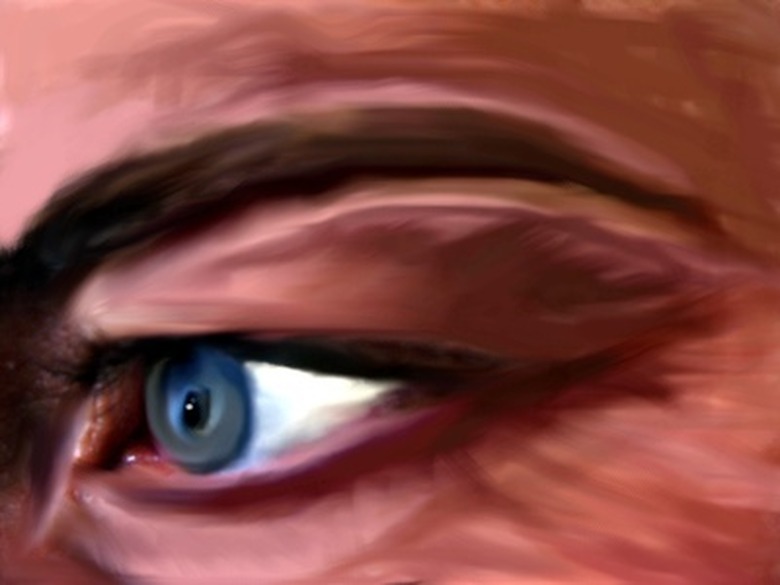How To Do A Science Project On How Eye Color Affects Peripheral Vision
Science projects are an objective way of teaching the scientific method through experimentation, but they can quickly become expensive if you choose the wrong project. One affordable science project you can complete is to test how your friends' eye color effects their peripheral vision. Peripheral vision is what you see out of the corner of your eyes. It is everything your eyes perceive without directly focusing on those particular objects. You can perform a simple scientific experiment to test how eye color effects their peripheral vision.
Step 1
Build your measuring device by gluing the dowel rod to the flat surface of your protractor along the straight side. Glue a small strip of cardboard to the curved side of your protractor directly in the center. You will find the 90 degree mark right at the center.
Step 2
Cut four different shapes out of your cardboard with your scissors. Make a triangle, a circle, a square and a hexagon. Color each shape a different color with your colored pencils.
Step 3
Glue each cardboard shape to a different craft stick. Tie a string to each craft stick. Tie the other end of the string to your dowel rod, leaving several feet of string between the two points.
Step 4
Gather several of your friends with different colored eyes and have them take turns holding the protractor in front of them, with the flat edge closest to their faces.
Step 5
Take each craft stick one at a time and hold it as far away from your friend as you can. Hold it outside of your friend's field of vision and slowly walk forward until you are directly in front of him. Keep the string taunt as you walk.
Step 6
Ask each friend to stop you when she can identify the color. Check the protractor to see what degree the string crosses under when she stopped you. Record that number in your notes.
Step 7
Ask each friend to stop you again when he can identify the shape. Make a note as to what degree the string crossed when you were stopped.
Step 8
Compile your notes to show when each of your friends could identify the shape and color. Draw conclusions as to which eye color allowed your friend to spot the shapes and colors first.
Things Needed
- Protractor
- Dowel rod
- Glue
- Cardboard
- String
- Craft sticks
- Colored pencils
- Scissors
TL;DR (Too Long; Didn't Read)
Test a larger circle of friends and average the results of each eye color for more accurate scientific results.
Cite This Article
MLA
Fritchman, Tom. "How To Do A Science Project On How Eye Color Affects Peripheral Vision" sciencing.com, https://www.sciencing.com/do-color-affects-peripheral-vision-7925210/. 24 April 2017.
APA
Fritchman, Tom. (2017, April 24). How To Do A Science Project On How Eye Color Affects Peripheral Vision. sciencing.com. Retrieved from https://www.sciencing.com/do-color-affects-peripheral-vision-7925210/
Chicago
Fritchman, Tom. How To Do A Science Project On How Eye Color Affects Peripheral Vision last modified August 30, 2022. https://www.sciencing.com/do-color-affects-peripheral-vision-7925210/
